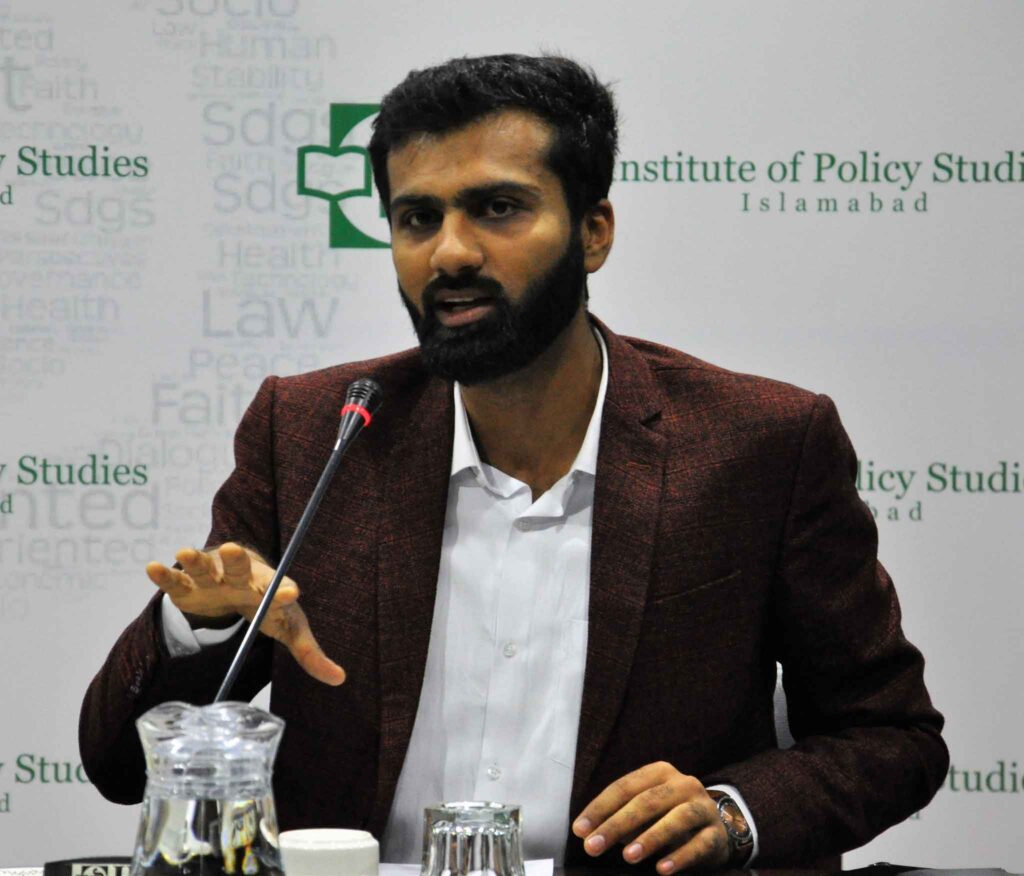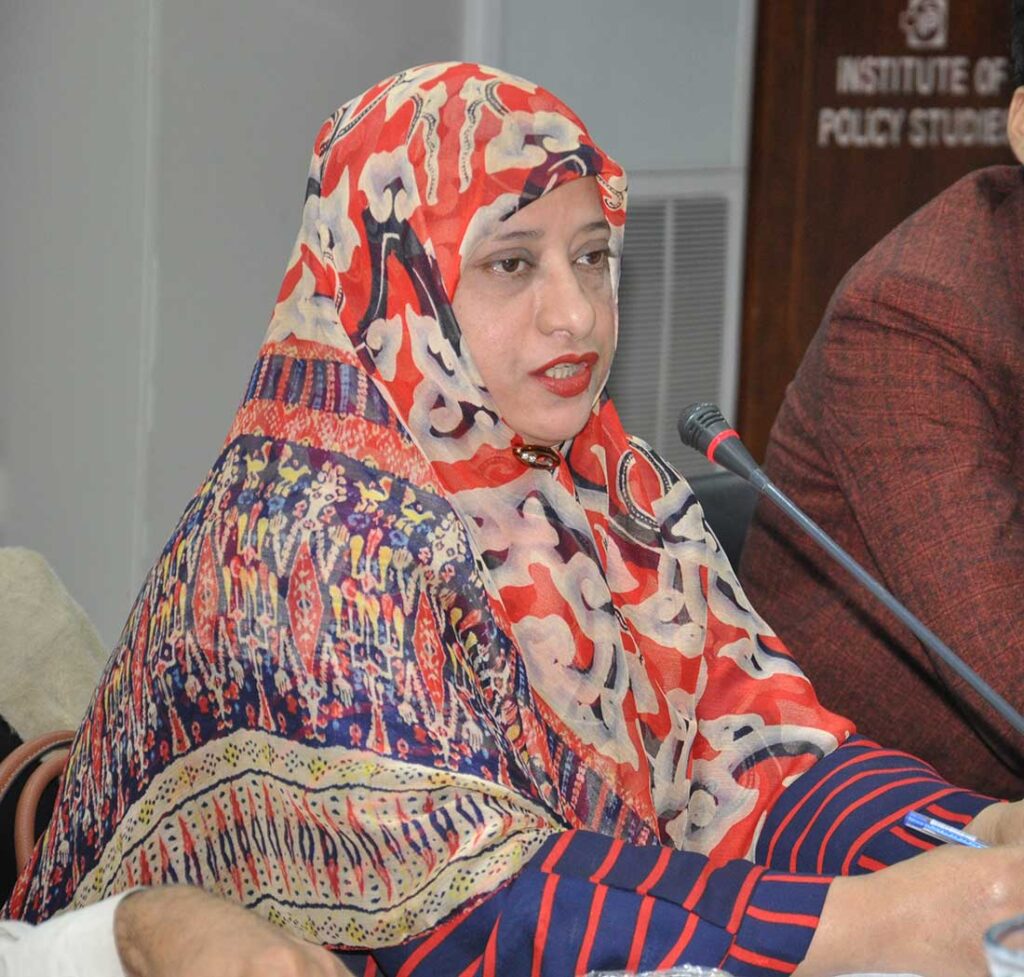‘Chutzpadik Advertising Strategies in the Pakistani Media – Impact on Society’
Chutzpadik advertising: Civil society’s role crucial for positive social change
An active role of civil society, a citizen-based advertising standards body, and an extensive legal manifestation regarding ethics of advertisement are crucial to bring positive social change and promptly address the challenges of Chutzpadik advertisements.
This was highlighted during a discussion on ‘Chutzpadik Advertising Strategies in the Pakistani Media – Impact on Society’ organized by the Institute of Policy Studies (IPS) on March 15, 2023.
The discussion, chaired by Dr Asmat Ara, HoD, Department of Mass Communication, University of Karachi, was addressed by Talha Shorwala, brand strategist and media consultant, Kashif H. Siddiqui, CEO, Pulse Consultant, Dr Safdar A. Sohail, former dean, National School of Public Policy, Dr Saima Esma, teacher and trainer in media studies, Syed Abu Ahmed Akif, former federal cabinet secretary, Shahzad Iqbal Sham, senior research fellow, IPS, and Khalid Rahman, chairman IPS.
The medium of mass communication is becoming a potent tool for disseminating progressive agenda through Chutzpadik advertisements. Also, the advertisements are now more linked with showing dreams of fulfilling expectations rather than facts. This trend seems to be increasingly perceivable in the advertising industry of Pakistan affecting the country’s social fabric with the artistic proofs of ethos, pathos, and logos, highlighted Talha.
These media strategies facilitate the social effects of novel advertising discourse by appealing to the credibility, reason, and emotions of society. While it does affect the individual and collective behavior of society, smartly crafted campaigns can have positive impacts as well.
 In the context of Pakistani media, as there is the mindset of brand custodians and creative agencies behind any advertising or brand campaign, they are mostly unaware of the social norms and nonchalant about its impact on society, stated Kashif Siddiqui.
In the context of Pakistani media, as there is the mindset of brand custodians and creative agencies behind any advertising or brand campaign, they are mostly unaware of the social norms and nonchalant about its impact on society, stated Kashif Siddiqui.
The intense polarization on sensitive topics, inconsistent values of MNCs, and their indifference to cultural values are also issues prevalent in the media industry of Pakistan, observed Saima Esma.
In order to promptly address these issues, she argued for an extensive legal manifestation regarding the advertisement ethics. Moreover, these ethics must not solely be focused on standardization. Instead, there must also be adaptability and adjustment of scientific advancements.
Safdar Sohail stated that advertising has a central impact on conscious change leading to a consumerism-based society. It is important to develop a consensus for a social policy, liquefy the consciousness, and undertake a social movement for core values in order to move society away from consumerism and its influences.
As the current media and advertising policies are driven by donors and funding, this increases the need to change the mindset as well as develop an advertising standard authority in the form of a citizen-based body with multiple stakeholders. Such a body must be founded from the citizen viewpoint and where citizens can lodge their complaints, said Syed Akif.
 Dr Asmat Ara stressed the need to rethink the use of media, particularly social media, to bring positive impact. The change can be brought about by the active role of civil society which is aware of the issues, informed of what’s happening against the norms, and able to evaluate it according to its negative or positive impact on communities’ behaviors.
Dr Asmat Ara stressed the need to rethink the use of media, particularly social media, to bring positive impact. The change can be brought about by the active role of civil society which is aware of the issues, informed of what’s happening against the norms, and able to evaluate it according to its negative or positive impact on communities’ behaviors.
In his concluding remarks, Khalid Rahman stated that there is no denying that different technologies and tools have made media powerful. On one hand, where it has resulted in increased complexity of issues, it has also created opportunities. To reap the benefits, capacity building must be focused on turning the opportunities into profitable outcomes, rather than challenging the industry all together, he said. Moreover, such media concerns cannot be addressed in isolation. The debate must be understood in the larger picture including other factors as well












